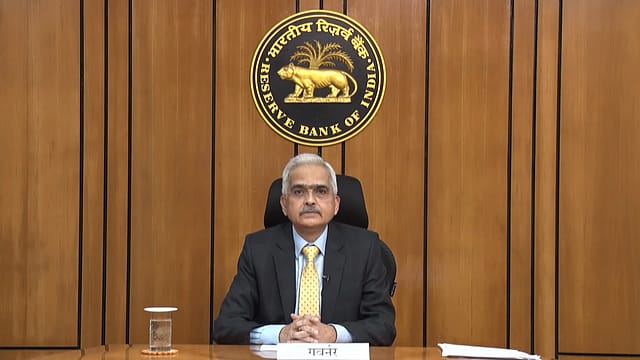RBI raises UPI limit for education, medical services; ups e-mandate limit on cards
ADVERTISEMENT

The Reserve Bank of India on Friday enhanced the unified payment interface (UPI) transaction limit for medical and educational services from ₹1 lakh per transaction at present to ₹5 lakh per transaction.
"This will help consumers to make UPI payments of higher amounts for education and healthcare purposes," Governor Shaktikanta Das says while announcing the outcome of the monetary policy committee meeting.
At present, the UPI transaction limit, excluding capital markets, collection, retail direct scheme and IPO (initial public offering) subscription, has been capped at ₹1 lakh. The UPI transaction limit for capital markets such as asset management company (AMC), broking and mutual funds, etc., and collections such as credit card payments, loan re-payments, EMI, and insurance, etc., is capped at ₹2 lakh. The UPI transaction limit for retail direct schemes and for IPO subscriptions is capped at ₹5 lakh.
e-mandate transaction limit up
Meanwhile, the RBI has also enhanced the e-mandates on cards for recurring transactions for various categories. According to the apex bank, e-mandates without the additional factor of authentication (AFA) has been increased from ₹15,000 to ₹1 lakh for subscription to mutual funds, payments of insurance premium and payments of credit card bills.
January 2026
Netflix, which has been in India for a decade, has successfully struck a balance between high-class premium content and pricing that attracts a range of customers. Find out how the U.S. streaming giant evolved in India, plus an exclusive interview with CEO Ted Sarandos. Also read about the Best Investments for 2026, and how rising growth and easing inflation will come in handy for finance minister Nirmala Sitharaman as she prepares Budget 2026.
"This measure will further accelerate the usage of e-mandates," says Governor Das.
The apex bank introduced the processing of e-mandates for recurring transactions in August 2019 to balance the safety and security of digital transactions with customer convenience. As many as 8.5 crore e-mandate transactions have been registered so far with processing of nearly ₹2,800 crore transactions every month, according to RBI data.
"The system has stabilised, but in categories such as subscription to mutual funds, payment of insurance premium and credit card bill payments, where the transaction sizes are more than ₹15,000, a need to enhance the limit has been expressed as adoption has been lagging," the apex bank says.
Regulatory framework for web aggregation of loan products
The apex bank has also laid down a regulatory framework for web aggregation of loan products. This comes almost a year after the apex bank accepted recommendations by the digital lending working group to come up with a regulatory framework for web aggregators of loan products (WALP). According to RBI, WALP entails aggregation of loan offers from multiple lenders on an electronic platform which enables the borrowers to compare and choose the best available option to avail loan from one of the available lenders.
"Based on the recommendation of the Working Group, it has been decided to bring such loan aggregation services offered by the Lending Service Providers (LSPs) under a comprehensive regulatory framework. The framework will focus on enhancing the transparency in the operations of WALPs, increase customer centricity and enable the borrowers to make informed choices,” says the apex bank.
Notably, the RBI in its monetary policy committee (MPC) meeting kept the repo rate unchanged at 6.5% for the fifth time in a row.
The MPC also decided by a majority of 5 out of 6 members to remain focused on the 'withdrawal of accommodation' to ensure that inflation progressively aligns with the target, while supporting growth.
